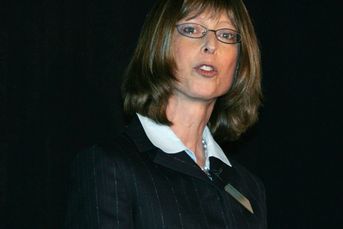Commodities prices resume their upswing
A decade-long rise in commodities prices — the so-called supercycle — is about to resume, market bulls say, driven by rising industrial demand, a weaker dollar and production constraints.
A decade-long rise in commodities prices — the so-called supercycle — is about to resume, market bulls say, driven by rising industrial demand, a weaker dollar and production constraints.
If recent performance is any indication, the upturn already may have begun.
The Dow Jones-UBS Industrial Metals Subindex is up 57.4% year-to-date through Aug. 12, and 75.1% since its low on Feb. 23.
By contrast, the Standard & Poor’s 500 stock index is up 48.7% since its low on March 9.
The rise in commodities prices comes after a decline of 36.6% last year as measured by the Dow Jones-UBS Commodity Index, which tracks returns on futures contracts for a mix of energy, metals and agricultural commodities. During the same period, the S&P 500 fell a comparable 38.5%.
“We’ve always been in a supercycle, and we remain in a big supercycle,” said Francisco Blanch, a London-based commodity strategist at Merrill Lynch & Co. Inc. of New York.
Already, while still in the midst “of a deep recession, we’ve [got] oil at 70” dollars per barrel, up from around $32 late last year, Mr. Blanch said, and copper at $2.70 per pound, double its low at the end of last year.
“I see no sign that the long-term run has ended,” said Bruce McCain, the chief investment strategist of Key Private Bank, the wealth management unit of KeyCorp in Cleveland, linking the trend “to the very rapid growth in emerging markets.”
The price recovery “is just the beginning of another commodity price rally, which is … likely to be even more extreme than in the past,” according to a research report released this month by The Goldman Sachs Group Inc. of New York.
Goldman estimates that by the end of next year, commodities markets are likely to be back to where they were in mid-2008, “when severe supply constraints forced the rationing of demand to keep the markets balanced,” the report said.
Industrial metals, including copper, zinc and nickel, have been some of the biggest movers of late. These metals typically lead during an economic recovery, in anticipation of a resurgence in manufacturing, analysts said.
Demand for metals is picking up, and inventories of commodities overall have been trimmed after about nine months of production cutbacks, Mr. Blanch said.
Observers said that China has been a big source of demand for metals, but it is unclear who the buyers are and whether they are industrial users or speculators.
BEARS ADVISE CAUTION
Although demand has picked up, it isn’t time to go hog-wild yet, warn commodities bears, noting that the recovery has been sluggish and may peter out into another economic downturn.
The metals markets “are getting ahead of themselves,” said Edward Meir, a senior commodity analyst at MF Global Inc. in New York, and are simply showing an anticipation that the economy is recovering. “There’s nothing fundamental to it,” he said.
As to the larger theory of a commodity supercycle, “it all depends on your point of view of the [economic] recovery,” Mr. Meir said.
A rapid recovery would likely drive prices higher, while a double-dip recession could take prices down and retest the lows from last year, he said. Mr. Meir anticipates a third scenario — a slow recovery, with some firming prices but no surge.
A longer-term uptrend in commodities has “yet to be proven,” said Eric Leake, chief investment officer at Anchor Capital Management Group Inc. in Irvine, Calif., which manages about $360 million, using quantitative risk-reward models.
All that the drop in commodities prices has done is get them back in line with a more normal economic outlook, he said, noting that last year and early this year, the “marketplace was pricing itself for complete financial Armageddon.”
Chronic supply problems, analysts said, are the main reason to be bullish on commodities prices.
Long-term underinvestment in production capacity was “exacerbated over the past year by the sharp drop in prices and tight credit,” Goldman Sachs said in its report. Decades of poor returns in “old-economy” commodities industries caused capital to be redirected into the “new economy, starving the commodity industries of the capital they needed,” the report said.
“The world has been sucking money away from energy [investment] to put into real estate [as] in Dubai [United Arab Emirates] with an 800-meter office tower and a ski station in the middle of the desert,” Mr. Blanch said.
Political considerations in oil- producing countries haven’t allowed for recycling of oil revenue into more production, he said, adding that excess capacity in commodities production is dwarfed by the far-larger excess capacity in industry. As that idle industrial capacity is put to use, excess commodities production will disappear, Mr. Blanch predicted.
Mr. McCain agreed that underinvestment in such production has been a problem, but noted the “more rapidly expanding demand than we’ve seen in the past.”
“I think that’s what’s making it a supercycle,” he said.
E-mail Dan Jamieson at [email protected].
Learn more about reprints and licensing for this article.





